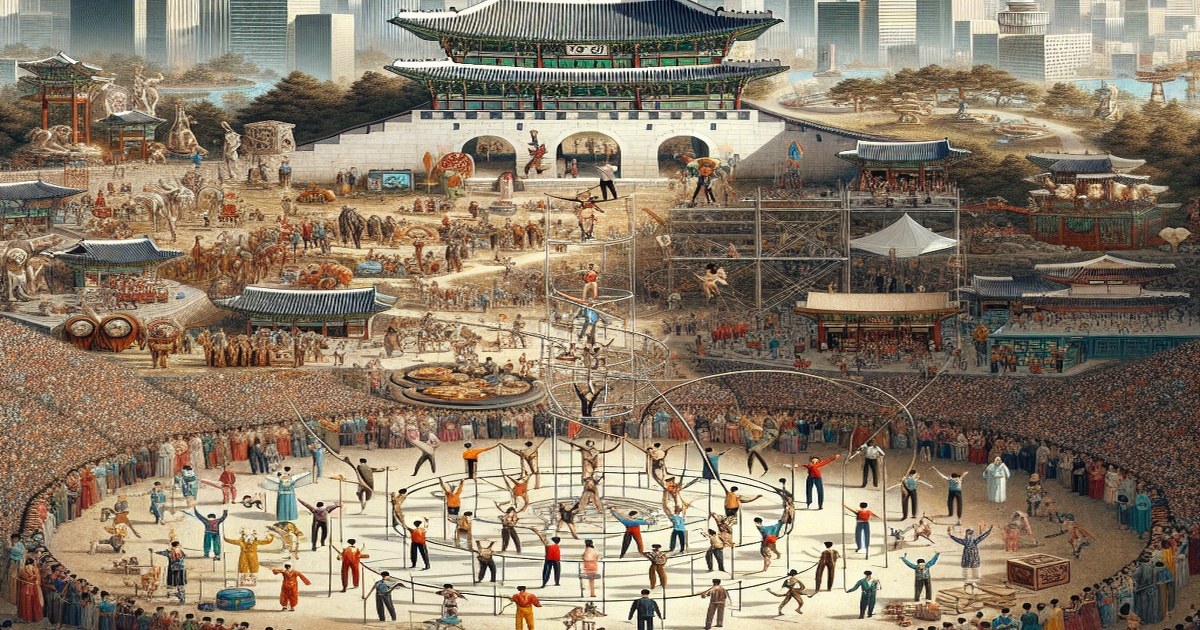The Dongchoon Circus Troupe, South Korea's last remaining circus, has adapted to changing times. Gone are the animal acts and death-defying stunts. Instead, the performances now feature acrobats showcasing their skills with acts like twirling on suspended fabric, juggling on a rotating wheel, and tightrope walking. Despite the changes, the audience continues to show their appreciation.
Park Sae-hwan, the head of the circus, reflects on the significance of his work. He acknowledges the hardships he has faced, but also feels a heavy responsibility to preserve the legacy of Dongchoon. He understands that if the circus were to close, a unique genre of performing arts in South Korea would disappear.
Founded in 1925, Dongchoon holds the distinction of being the oldest circus in Korea. During the 1960s, when televisions were not common, the circus was a major source of entertainment, traveling across the country and captivating audiences with exotic animals and a variety of performances. At its peak, the circus employed over 200 artists and staff.
However, the rise of television, movies, the internet, video games, and professional sports led to a decline in the circus's popularity. The entertainment landscape shifted, and many performers moved to television. Additionally, the circus had to eliminate animal shows due to growing protests from animal rights activists.
Park, who joined Dongchoon in 1963, later returned to the industry in 1978, taking over the circus after it faced financial difficulties. Now 80 years old, he is determined to keep Dongchoon alive, recognizing its importance in the history of Korean performing arts.
Heo Jeong Joo, an expert, emphasizes the historical value of Dongchoon, highlighting its connection to traditional performers and artists. She believes the circus should be recognized as an intangible cultural asset.
The circus faced a near-closure in 2009 due to a flu outbreak that significantly reduced attendance. However, media coverage highlighting the circus's struggles led to a surge in support, allowing it to survive. Since 2011, Dongchoon has been performing in Ansan, a seaside tourist area, and also travels for temporary shows.
Local officials note that Dongchoon's presence has boosted tourism. The shows attract both older generations who remember circuses from their childhood and younger generations seeking new experiences.
The circus now focuses solely on acrobatic performances, avoiding overly risky acts. The performers are primarily Chinese, as the profession is less appealing to South Koreans due to the perceived dangers and low pay. Park hopes to establish a circus school in Ansan to train South Korean artists.
Xing Jiangtao, the performance director, has been with Dongchoon since 2002. He hopes to continue creating quality performances to ensure the circus's survival for another century.







4 Comments
Raphael
It's a shame it's not as popular as it used to be. But that's just the nature of the world.
Muchacho
Acrobatics are beautiful and require incredible skill. I'm sure the performances are dazzling.
dedus mopedus
Boosting tourism? I'll believe it when I see the actual visitor numbers. Hype doesn't equal success.
Eric Cartman
They need to modernize to make it appeal more to the younger generations, not just rely on the people's nostalgic love.